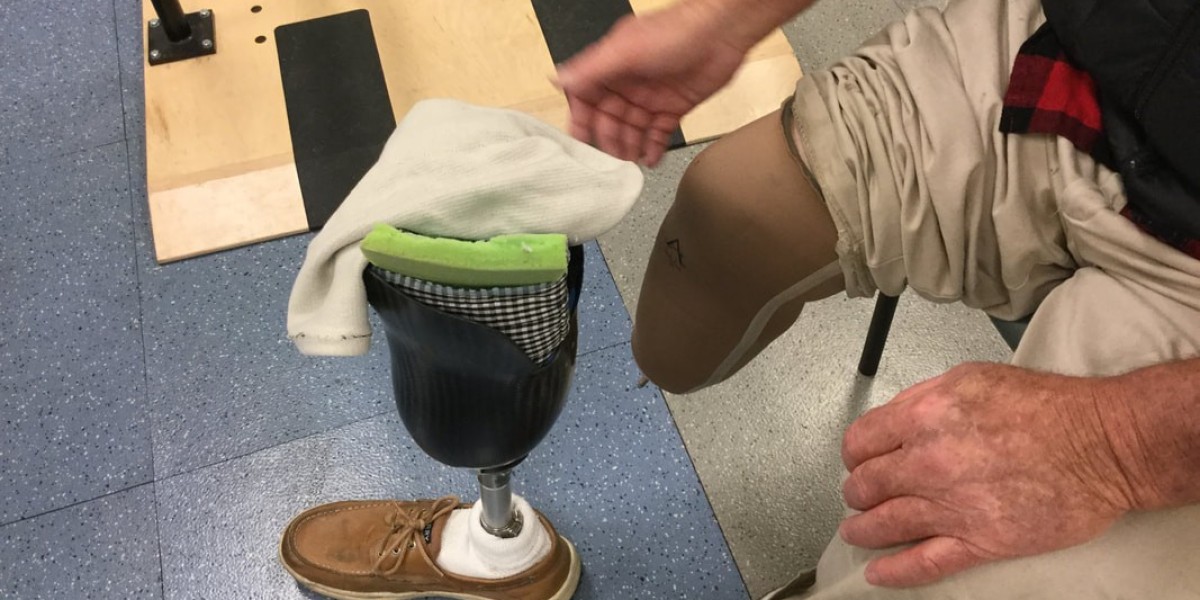Fitting Prosthetics: A Key to Successful Rehabilitation
The foundation of a successful prosthetic journey lies in the fitting process. A well-fitted prosthetic device can significantly enhance mobility, comfort, and overall quality of life for individuals with limb loss. Proper fitting ensures optimal weight-bearing, stability, and alignment, allowing amputees to regain their independence and engage in daily activities with confidence.
However, achieving the perfect fit can be challenging. Every individual has unique anatomical characteristics, and factors such as residual limb shape, volume changes, and tissue characteristics must be considered during the fitting process. This is where IFIT Prosthetics shines, providing innovative solutions to overcome the challenges faced during prosthetic fitting.
The Advantages of Adjustable Prosthetic Socket
IFIT Prosthetics introduces an extraordinary breakthrough in prosthetic technology with adjustable prosthetic sockets. These sockets offer unmatched customization and comfort, empowering amputees to tailor their prosthetic fit to their specific needs. By allowing adjustments in socket volume and fit, IFIT Prosthetics ensures an optimal interface between the residual limb and the prosthetic device.
With adjustable prosthetic sockets, amputees can easily adapt to changes in limb volume due to fluctuations in activity levels, temperature, or physiological factors. This adaptability improves comfort, prevents skin irritation, and reduces the need for frequent socket replacements, ultimately saving time and cost associated with prosthetic maintenance.
Transtibial Socket: A Breakthrough in Prosthetic Technology
Among the remarkable innovations offered by IFIT Prosthetics is the transtibial socket. This cutting-edge socket design caters specifically to individuals with below-knee amputations, providing unparalleled functionality and comfort. The transtibial socket encompasses a distal weight-bearing element that distributes forces more evenly, reducing pressure on sensitive areas of the residual limb.
By facilitating efficient load transfer, the transtibial socket enables improved gait mechanics and a more natural walking pattern. Its advanced features, such as adjustable alignment and dynamic response, allow for seamless integration with prosthetic components, promoting a harmonious interaction between the amputee and the device.
The Art and Science of Prosthetic Fitting
Prosthetic fitting is a multidimensional process that combines art and science to optimize the user's experience. It starts with a comprehensive assessment of the individual's functional goals, lifestyle, and anatomical characteristics. Through a collaborative approach involving prosthetists, therapists, and the individual, an individualized fitting plan is devised.
Once the initial fitting is completed, a series of adjustments are made to ensure proper alignment, stability, and function. Gait training and rehabilitation play a crucial role in the prosthetic journey, allowing individuals to adapt to their new prosthetic device and regain confidence in their mobility. IFIT Prosthetics integrates these elements seamlessly, providing personalized care and support at every step of the way.
Conclusion
IFIT Prosthetics is revolutionizing the field of prosthetics by offering innovative solutions that enhance mobility, comfort, and quality of life for individuals with limb loss. Through adjustable prosthetic sockets and the groundbreaking transtibial socket, IFIT Prosthetics ensures optimal fitting, customization, and functionality. By combining the art and science of prosthetic fitting, IFIT Prosthetics paves the way for a brighter and more inclusive future for amputees worldwide.
FAQs
What is the lifespan of IFIT Prosthetics?
IFIT Prosthetics are designed to be durable and long-lasting. The lifespan of a prosthetic device depends on various factors, such as the individual's activity level, maintenance, and general wear and tear. With proper care and regular maintenance, IFIT Prosthetics can provide reliable service for several years.
Can IFIT Prosthetics be used for all amputations?
IFIT Prosthetics offers a wide range of prosthetic solutions for different levels of amputations, including transtibial (below-knee), transfemoral (above-knee), and upper limb amputations. Their expertise extends to both partial and full limb loss, ensuring customized solutions for diverse needs.
How long does it take to adjust to a new prosthetic socket?
The adjustment period for a new prosthetic socket can vary from individual to individual. It depends on factors such as the individual's physical condition, activity level, and previous experience with prosthetics. While some individuals may adapt quickly, others may require more time for acclimatization. Working closely with a prosthetist and following a comprehensive rehabilitation program can help facilitate a smoother transition.
Are IFIT Prosthetics covered by insurance?
Insurance coverage for IFIT Prosthetics may vary depending on the insurance provider and the individual's policy. It is advisable to consult with the prosthetist and insurance provider to determine the coverage options available and any necessary documentation or approvals required.
Can IFIT Prosthetics improve my mobility and quality of life?
Absolutely! IFIT Prosthetics is dedicated to enhancing mobility and improving the quality of life for individuals with limb loss. By providing customized, comfortable, and functional prosthetic solutions, IFIT Prosthetics empowers individuals to regain their independence, engage in daily activities, and pursue their goals with confidence.








